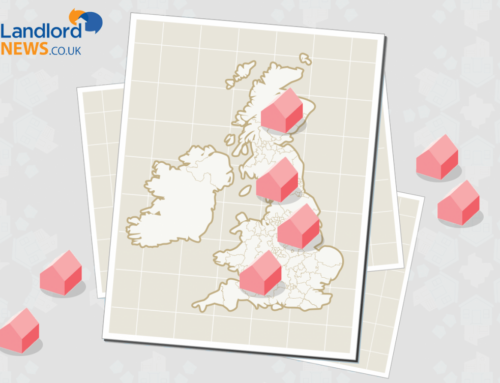Home » Uncategorised »
Green Belt Land Could Solve the Housing Crisis
This article is an external press release originally published on the Landlord News website, which has now been migrated to the Just Landlords blog.

It is well known that Britain is only building half the homes needed to resolve the housing crisis. But it is believed that if green belt land is released, an influx of new homes could solve the problem.
House price growth is at its highest since before the recession. The average property is now £273,000 and in London it is almost double, at £498,000.
Founder and Chief Executive of Hill Partnerships – a large house builder in the South East – Andy Hill, says that the crisis will continue if the restrictions on green belt land remain harsh. The controls on these areas were created to protect the countryside.
Hill explains: “Ultimately, if bits of green belt land are released at a time and it’s controlled, it’s not a major issue. Everyone is trying to develop brownfield sites as quickly as we can. We understand they’ve got to take priority, but developing on brownfield sites takes a long time and we need to get the house building numbers up.”
A brownfield site is land that has already been developed, but has the potential to be redeveloped. House builders have snapped up these sites in the last few years, as tight restrictions remain on the green belt.
According to the Government, there is enough brownfield land in England for 2.5m new homes, a large amount in London, where demand is at its highest.
Chancellor George Osborne revealed last year that he would build 200,000 homes on brownfield land by 2020 by placing local development orders on over 90% of sites that are suitable.
Brownfield sites can be expensive, however, as they need to be prepared, unlike undeveloped land.
Hill continues: “Getting planning permission is another hurdle. Gone are the days of being able to buy a piece of land and start developing nine months later. Starting from scratch, it takes about a year to get approval, then up to another 12 months to start on site. It’s amazing and highly frustrating how long it takes to get planning.”
The green belt accounts for 13% of the land area in England, around 1,639,560 hectares (4m acres), while brownfield land makes up just 70,000 hectares, about 100,000 football pitches.
Hill Partnerships is based in Waltham Abbey, Essex, and built over 1,300 homes last year, predominantly in the South East. There are 1,635 in the pipeline this year, with a total sales value predicted at £650m.
In the whole of Britain, 118,770 new homes were built in 2014, found the Department for Communities and Local Government. This is less than half the industry-accepted annual figure for tackling the housing shortage.
The Royal Institution of Chartered Surveyors’ (RICS) latest monthly index revealed that 33% more of its members reported price rises in the UK in April than in March. This is the highest number since August 2014.
Simon Rubinsohn, Chief Economist at RICS, cautions: “Alongside an increased flow of second-hand stock, it is absolutely critical that the new Government focuses on measures to boost the flow of new build [homes].”1
Hill Partnerships saw a £250m turnover in 2014, with a profit of £18m, up 30% on the previous year. The firm has five offices in the South East and employs 350 people. Hill, 56, started the business in 1999 after being a manager of a construction firm.
“We started as a contractor for housing associations and built our first development site in 2003. We got in at just the right time before the house boom of the early 2000s. Since then, the business has grown steadily; about 10% to 30% growth per annum.”
The company built its first major development in 2005, a 137-unit block of flats in Stevenage. Its current projects include a 249-home North West Cambridge development and 237 homes in Barton Park, Oxford.
Four-fifths of its work is outside London, but projects in the capital are mainly in the suburbs. Hill Partnerships has invested in Hackney, Walthamstow and currently is working on a 140-home scheme in Southwark.
Suburbs like Hackney and Walthamstow have become sought-after locations recently.
Property prices in Hackney, once considered rundown, have grown by 800% in the last 30 years. The average flat in Hackney is now £444,391, according to Rightmove. A semi-detached house would cost over £1.1m.
Hill has found that homes in Walthamstow are continuing to increase. In the past three years, prices have risen by about 80%, with the average one-bedroom flat costing £300,000. He is currently selling a two-bed penthouse in the area for £520,000.
Hill explains: “We’ve focused away from zones in central London, which are far more expensive. Areas such as Walthamstow have had terrific growth. The area is high in demand and has become a very popular place to live.”
He also says that the possibility of interest rate rises next year could impact business, as people could become cautious about borrowing money.
However, he says that business is resilient at present, as “there has never been a better time to get a mortgage” and people are fixing good rates for five years.
Hill adds: “The real problem is getting the first time buyers onto the ladder. It’s very, very difficult. Mortgage lenders make them jump through hoops. They’re always looking for reasons why they could fail rather than focusing on helping them succeed. I haven’t seen enough of the Help to Buy Isas to comment on their effectiveness, but the concept is good.”1





